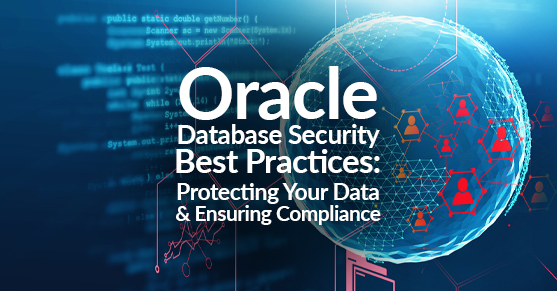Database security is a critical aspect of any organization’s IT infrastructure, as it plays a crucial role in protecting sensitive data and ensuring compliance with various regulations. Oracle databases, in particular, are often targeted by cybercriminals due to their widespread use and the valuable information they contain. In this blog post, we will discuss some of the best practices for securing Oracle databases, including user access control, data encryption, and patch management. By implementing these best practices, organizations can better protect their Oracle databases and safeguard their sensitive information from potential threats.
1. User Access Control
One of the fundamental principles of database security is controlling who has access to the database and what actions they are allowed to perform. Implementing strong user access controls can help prevent unauthorized access and minimize the risk of data breaches. Some best practices for controlling user access in Oracle databases include:
- Enforce the principle of least privilege: Grant users the minimum level of access necessary to perform their job functions and nothing more.
- Use roles for managing permissions: Create roles that represent different job functions and assign appropriate privileges to each role. Assign users to roles rather than granting them individual privileges.
- Implement strong authentication methods: Require users to authenticate using strong credentials, such as multi-factor authentication (MFA), to reduce the risk of unauthorized access.
- Regularly review and audit user access: Periodically review user accounts and privileges to ensure that only authorized individuals have access to the database. Remove or modify access for users who no longer require it.
2. Data Encryption
Encrypting sensitive data stored in Oracle databases is an essential security measure that can help protect against unauthorized access and data breaches. Oracle offers several encryption options, including Transparent Data Encryption (TDE) and column-level encryption. Some best practices for implementing data encryption in Oracle databases include:
- Encrypt sensitive data at rest: Use TDE to encrypt entire tablespaces or column-level encryption for specific columns containing sensitive information.
- Encrypt data in transit: Enable network encryption to protect data as it travels between the database and client applications.
- Manage encryption keys securely: Store and manage encryption keys separately from the database, using solutions like Oracle Key Vault to ensure they are not compromised.
3. Patch Management
Regularly applying security patches to your Oracle databases is critical for addressing known vulnerabilities and maintaining a secure environment. Oracle releases Critical Patch Updates (CPUs) quarterly, which contain fixes for security vulnerabilities in Oracle products. Some best practices for patch management in Oracle databases include:
- Establish a patch management process: Develop a documented process for identifying, testing, and applying security patches to your Oracle databases.
- Monitor for new patches: Regularly check for new security patches released by Oracle and assess their applicability to your environment.
- Test patches in a non-production environment: Deploy patches in a non-production environment first to test their impact on the system and identify any potential issues before deploying them in production.
- Apply patches promptly: Once a patch has been tested and approved, apply it to production systems as soon as possible to minimize the window of vulnerability.
Conclusion
Securing Oracle databases is an ongoing process that requires diligent attention to user access control, data encryption, and patch management. By implementing these best practices, organizations can significantly reduce the risk of unauthorized access, data breaches, and other security incidents affecting their Oracle databases. As cyber threats continue to evolve, it’s essential to stay informed and adapt your security strategies accordingly to protect your valuable data and maintain compliance with regulatory requirements.
For more information, please contact VDBA!

